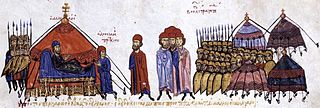 W
WAlusian was a Bulgarian and Byzantine noble who ruled as emperor (tsar) of Bulgaria for a short time in 1041.
 W
WArdabur was the son of Flavius Ardabur Aspar, Master of Horse and Magister Militum of the Eastern Roman Empire in the fifth century. Ardabur apparently often served under his famous father during his campaigns. In 466 Ardabur was accused of a treasonous plot, probably by his father's political enemies. The accusation accelerated Aspar's fall from power. Both Ardabur and Aspar were killed in a riot in 471.
 W
WFlavius Ardabur Aspar was an Eastern Roman patrician and magister militum of Alanic-Gothic descent. As the general of a Germanic army in Roman service, Aspar exerted great influence on the Eastern Roman Emperors for half a century, from the 420s to his death in 471, over Theodosius II, Marcian and Leo I, who, in the end, had him killed. His death led to the ending of the Germanic domination of Eastern Roman policy.
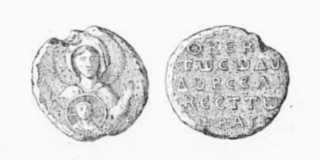 W
WRoussel de Bailleul, also known as Phrangopoulos, or in the anglicized form Russell Balliol was a Norman adventurer who travelled to Byzantium and there received employ as a soldier and leader of men from the Emperor Romanus IV. He is also known as Ursellus de Ballione in Latin or Roscelin or Roskelin de Baieul, and Anna Comnena called him Ourselios (Οὐρσέλιος), also rendered Urselius.
 W
WFlavius Belisarius was a military commander of the Byzantine Empire. He was instrumental in the reconquest of much of the Mediterranean territory belonging to the former Western Roman Empire, which had been lost less than a century prior.
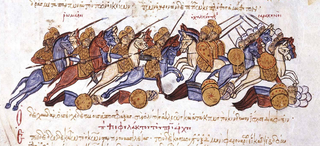 W
WThe patrikios Niketas Chalkoutzes was a Byzantine general, the first attested member of the Chalkoutzes family, and most notable for his recovery of Cyprus from the Arabs in 965.
 W
WConstantine Dalassenos was a prominent Byzantine aristocrat of the first half of the 11th century. An experienced and popular general, he came close to ascending the imperial throne by marriage to the porphyrogenita Empress Zoe in 1028. He accompanied the man Zoe did marry, Emperor Romanos III Argyros, on campaign and was blamed by some chroniclers for Romanos' humiliating defeat at the Battle of Azaz.
 W
WKonstantios Doukas, Latinized as Constantius Ducas, was a junior Byzantine emperor from 1060–1078, and a senior Byzantine emperor for a short time in 1078. Konstantios was the son of Emperor Constantine X Doukas and Empress Eudokia Makrembolitissa. Upon his birth, he was elevated to junior emperor, along with his brother Michael VII. He remained as junior emperor during the reigns of Constantine, Romanos IV Diogenes, and Michael VII, before he became senior emperor on 31 March 1078, due to the abdication of Michael VII. He was soon handed over to Nikephoros III, a usurper, due to his inability to rule. He was sent to live in a monastery, where he stayed until recalled by Alexios I Komnenos, who made him a general. He was killed on 18 October 1081, in the Battle of Dyrrhachium.
 W
WHervé, called Frankopoulos or Phrangopoulos, was a Norman mercenary general in Byzantine service during the 1050s.
 W
WHeraclius was the Byzantine emperor from 610 to 641. His rise to power began in 608, when he and his father, Heraclius the Elder, the exarch of Africa, led a revolt against the unpopular usurper Phocas.
 W
WHeraclius the Elder was a Byzantine general and the father of Byzantine emperor Heraclius. Of possible Armenian origin, Heraclius the Elder distinguished himself in the war against the Sassanid Persians in the 580s. As a subordinate general, Heraclius served under the command of Philippicus during the Battle of Solachon and possibly served under Comentiolus during the Battle of Sisarbanon. In circa 595, Heraclius the Elder is mentioned as a magister militum per Armeniam sent by Emperor Maurice to quell an Armenian rebellion led by Samuel Vahewuni and Atat Khorkhoruni. In circa 600, he was appointed as the Exarch of Africa and in 608, Heraclius the Elder rebelled with his son against the usurper Phocas. Using North Africa as a base, the younger Heraclius managed to overthrow Phocas, beginning the Heraclian dynasty, which would rule Byzantium for a century. Heraclius the Elder died soon after receiving news of his son's accession to the Byzantine throne.
 W
WIsaac I Komnenos or Comnenus was Byzantine emperor from 1057 to 1059, the first reigning member of the Komnenian dynasty.
 W
WJohn VI Kantakouzenos, Cantacuzenus, or Cantacuzene was a Greek nobleman, statesman, and general. He served as grand domestic under Andronikos III Palaiologos and regent for John V Palaiologos before reigning as Byzantine emperor in his own right from 1347 to 1354. Deposed by his former ward, he was made to retire to a monastery under the name Joasaph Christodoulos and spent the remainder of his life as a monk and historian. At age 90 or 91 at his death, he was the most aged of the Roman emperors.
 W
WConstantine Euphorbenos Katakalon was a Byzantine noble and one of the most prominent generals of the reign of Alexios I Komnenos.
 W
WAdrianos Komnenos was a Byzantine aristocrat and general, and a younger brother of the Byzantine emperor Alexios I Komnenos.
 W
WIsaac Komnenos or Comnenus was a notable Byzantine aristocrat and military commander in the 1070s. Isaac played a major role in the rise to the throne of his younger brother, the Byzantine Emperor Alexios I Komnenos, and remained a leading figure in his brother's administration until his death.
 W
WJohn Komnenos was a Byzantine aristocrat and military leader. The younger brother of Emperor Isaac I Komnenos, he served as Domestic of the Schools during Isaac's brief reign (1057–59). When Isaac I abdicated, Constantine X Doukas became emperor and John withdrew from public life until his death in 1067. Through his son Alexios I Komnenos, who became emperor in 1081, he was the progenitor of the Komnenian dynasty that ruled the Byzantine Empire from 1081 until 1185, and the Empire of Trebizond from 1204 until 1461.
 W
WManuel Erotikos Komnenos was a Byzantine military leader under Basil II, and the first fully documented ancestor of the Komnenos dynasty. His origin and parentage is obscure. He is only mentioned in the sources as leading the defence of Nicaea in 978 against the rebel Bardas Skleros, and as an imperial envoy to him 11 years later. He had three children, late in life. The eldest, Isaac, became emperor in 1057–1059, and the youngest, John, was the progenitor of the Komnenian dynasty as the father of Alexios I Komnenos.
 W
WLeontius was a general of the Eastern Roman Empire and claimant to the throne who led a rebellion against emperor Zeno in 484–488.
 W
WMaximinus was a 5th-century East Roman official, serving as ambassador to Attila the Hun and as a senior minister at Constantinople.
 W
WMizizios or Mezezius was an Armenian noble who served as a general of Byzantium, later usurping the Byzantine throne in Sicily from 668 to 669.
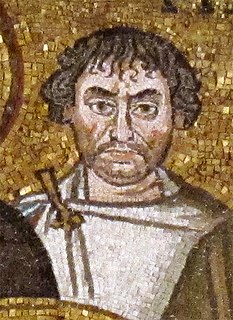 W
WNarses was, with Belisarius, one of the great generals in the service of the Byzantine Emperor Justinian I during the Roman reconquest that took place during Justinian's reign. Narses was a Romanized Armenian. He spent most of his life as an important eunuch in the palace of the emperors in Constantinople.
 W
WNikephoros II Phokas, Latinized Nicephorus II Phocas, was Byzantine emperor from 963 to 969. His brilliant military exploits contributed to the resurgence of the Byzantine Empire during the 10th century. His reign, however, included controversy. In the west, he inflamed conflict with the Bulgarians and saw Sicily completely turn over to the Muslims, while he failed to make any serious gains in Italy following the incursions of Otto I. Meanwhile, in the east, he completed the conquest of Cilicia and even retook the island of Cyprus, thus opening the path for subsequent Byzantine incursions reaching as far as Upper Mesopotamia and the Levant. His administrative policy was less successful, as in order to finance these wars he increased taxes both on the people and on the church, while maintaining unpopular theological positions and alienating many of his most powerful allies. These included his nephew John Tzimiskes, who would take the throne after killing Nikephoros in his sleep.
 W
WGregory Pakourianos was a Byzantine politician and military commander. He was the founder of the Monastery of the Mother of God Petritzonitissa in Bachkovo and author of its typikon. The monks of this Orthodox monastery were Iberians.
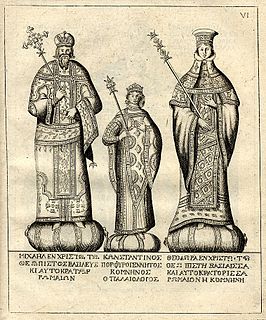 W
WConstantine Palaiologos or Palaeologus was a Byzantine prince of the Palaiologos dynasty, who also served as a general in the wars against the Serbs and Turks.
 W
WConstantine Phokas was a Byzantine aristocrat and general.
 W
WLeo Phokas or Phocas was a prominent Byzantine general who scored a number of successes in the eastern frontier in the mid-10th century alongside his older brother, the Emperor Nikephoros II Phokas. He served as chief minister during his brother's reign, but was dismissed and imprisoned by his successor, John Tzimiskes.
 W
WBardas Skleros or Sclerus was a Byzantine general who led a wide-scale Asian rebellion against Emperor Basil II during the years 976 to 979.
 W
WGregory Taronites was an Armenian prince of Taron, who went over to Byzantine service and held senior commands and governorships under Emperor Basil II. He was killed by the Bulgarians at an ambush near Thessalonica ca. 991 or 995.
 W
WThomas the Slav was a 9th-century Byzantine military commander, most notable for leading a wide-scale revolt in 821–23 against Emperor Michael II the Amorian.
 W
WBasil Vatatzes was a Byzantine military commander, and likely the father of the Nicaean emperor John III Doukas Vatatzes.
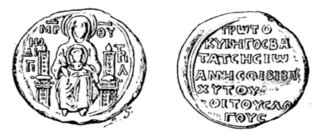 W
WJohn Vatatzes or Batatzes was a Byzantine official and magnate active in the second quarter of the 14th century, playing a prominent role in the Byzantine civil war of 1341–1347.